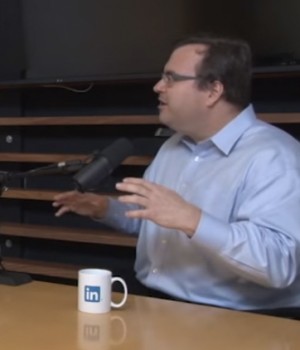In a world of saturation and commoditisation, you’d be forgiven for thinking there’s nothing a consumer can’t buy. If this conventional wisdom is correct and every conceivable market has been taken, how can you gain market share from the incumbents?
Here are seven steps to stealing market share from your competition.
Step 1: Act with a spy’s stealth
If your market is competitive, you need to understand who you’re up against. Each rival will be slightly different and you need to know their strengths and weaknesses, variations in business models and achievements in the field. Without this basic information, you’re on a journey without a map.
Step 2: Dare to be different
Once you’ve established how your competitors have structured their businesses, it’s time you dared to be different.
Be bold! Think of it as trying to oust the enemy from a hilltop fortress. Only unexpected and bold action will give you a chance.
Focus on any one or all of the following product design elements: benefits, price, cost, niche, brand and customer experience. Factor in customer satisfaction from the beginning.
Step 3: Abandon your instincts: Test, test, and test some more
Typically, entrepreneurs trust their instincts, are impatient for results, and are cost conscious. These traits, normally central to success, can lead to an unintended mistake when trying to take market share.
Firstly, confident entrepreneurs with strong egos and belief in their instincts can overlook the need for testing. Secondly, testing sounds like a costly impediment to results-hungry entrepreneurs with an itch for fame.
My advice: test. Check your instincts. It doesn’t need to cost a cent and can even be done in a day. Simply tell ten people in your target market about your idea. You’ll be surprised what they say.
Step 4: Differentiate with gusto, attack with vigour
Write your marketing material to emphasise your difference. Don’t be coy or shy. Make this point of contrast immediately and boldly.
Don’t be afraid to contrast your offering with that of your #1 rival. In fact, go for glory. Be cheeky and ambitious by trying to dislodge the glamour brand in your industry.
If I were a betting man, I’d guess it would take your incumbent months or even years to respond directly to your guerrilla tactics. In the meantime, you’re already eroding their market share.
Step 5: Obsess about your promise; deliver and fulfil
Having designed, tested and hyper-marketed, you need to actually deliver on your promise. Without fulfilment, your new brand is dead. Remember, you have to dislodge the incumbent from his hilltop fortress.
Step 6: Let curiosity drive marketing experimentation
Differentiation requires constant attention, reassessment and adjustment. Experiment with your promotion, focusing on message then media.
Do your prospects respond to greed or fear? Which angles are best? Do they respond better when urgency is applied? If so, which angle is most effective?
With media, you have a whole armoury at your disposal: comprehensive direct marketing campaigns, outdoor signs, radio, affiliate programs, samples, SEO, word-of-mouth, TV, social media, magazine advertisements. When you find a message and medium which resonates, repeat it. Adapt messages to remain fresh and sharp.
Finally, record the findings of your experiments with the meticulous care and curiosity of a clinical trial.
Step 7: Evangelise and celebrate customer satisfaction; convert the world
Once you have customers, continue talking with them. Ask how they heard about you so you know what’s working.
If you have happy customers, here’s a simple technique to wed them to you and build another promotional opportunity: ask them for a testimonial. You can ask for a verbal testimonial, an email, letter, audio or even video. Whatever you do, ask customers to help share your message with the world.
Even better, simultaneously have your customers talk about how easy it was to switch to you whilst offering prospects incentives to switch. Above all, celebrate customer satisfaction and evangelise the benefits they’ve gained.
Without a client to his name, Kenelm Tonkin started Tonkin Corporation in the highly competitive conference industry in 2000. He built a 24% market share in Australia and earned three BRW Fast 100 rankings. Today, it is an international group offering conferences, training, databases, publishing, business improvement consulting and property services, operating from offices in Sydney, Singapore, Manila and New York. Tonkin Corporation is currently Australia’s 26th fastest growing company.





![Want more credibility and influence? Unlock the 12 principles of persuasion checklist [FREE DOWNLOAD]](https://anthillonline.com/wp-content/uploads/2016/03/james-persuasion-and-influence-nfsu-02.pdf-Box-2016-03-24-15-09-44-300x194.png)
![THE ULTIMATE CASHFLOW CHECKLIST [FREE DOWNLOAD]](https://anthillonline.com/wp-content/uploads/2016/06/james-Seven-simple-strategies-to-cut-costs-04.pdf-Box-2016-06-30-13-49-35-100x75.png)
![Ever considered crowdfunding? [FREE REPORT]](https://anthillonline.com/wp-content/uploads/2017/03/liz-wald-100x75.png)
![The Top 5 Most Insanely Dumb Mistakes made by Rookie and Seasoned LinkedIn Users, with David Hobson [FREE REPORT]](https://anthillonline.com/wp-content/uploads/2015/07/Screen-Shot-2015-11-26-at-14.29.18-100x75.png)
![How to market your business when you don’t have a business yet [CHEAT SHEET]](https://anthillonline.com/wp-content/uploads/2016/01/oli-gardner-memes-02-100x75.jpg)
![Five essential things to get right if you want to raise capital, with Bryan Vadas [FREE CHEAT SHEET]](https://anthillonline.com/wp-content/uploads/2015/08/vadas-3d-cover-01--100x75.png)
![How to get two million YouTube views a day on your latest video [VIDEO]](https://anthillonline.com/wp-content/uploads/2014/04/FlashMob-300x350.jpg)


![How To Grow Your Business and Profits with Jason Cunningham [CHEAT SHEET]](https://anthillonline.com/wp-content/uploads/2015/07/Cunningham-300x194.png)
![Three easy wins when using LinkedIn with David Hobson [FREE REPORT]](https://anthillonline.com/wp-content/uploads/2015/08/3quick-wins-100x75.png)
![How to build a retail empire with James Webber [FREE REPORT]](https://anthillonline.com/wp-content/uploads/2015/06/james-webber-instagram-memes-01-100x75.jpg)
![How to give good headlines, and create emails that get opened [CHEAT SHEET]](https://anthillonline.com/wp-content/uploads/2013/11/7-steps-cheatsheet-3d-cover-nuova--100x75.png)
![New Zealand’s Xero eyes US IPO, further disruption as subscribers increase [INFOGRAPHIC]](https://anthillonline.com/wp-content/uploads/2014/07/sruuuuujana-212x194.png)
![Ever wonder if your ‘content marketing’ is really just crap? You gotta see this! [INFOGRAPHIC]](https://anthillonline.com/wp-content/uploads/2014/08/content-100x75.jpg)
![7 Business Lessons From Game of Thrones [INFOGRAPHIC]](https://anthillonline.com/wp-content/uploads/2014/10/infographic-games-of-thrones-041-100x75.jpg)
![How to build your own Media Empire… In seven steps with Nathan Chan [INFOGRAPHIC]](https://anthillonline.com/wp-content/uploads/2014/10/Nathan-Chan-Infographic-e1413419529176-100x75.jpg)
![5 Business Lessons From Tinder [INFOGRAPHIC]](https://anthillonline.com/wp-content/uploads/2014/10/Tinder-Elegant-Infographic-100x75.jpg)



